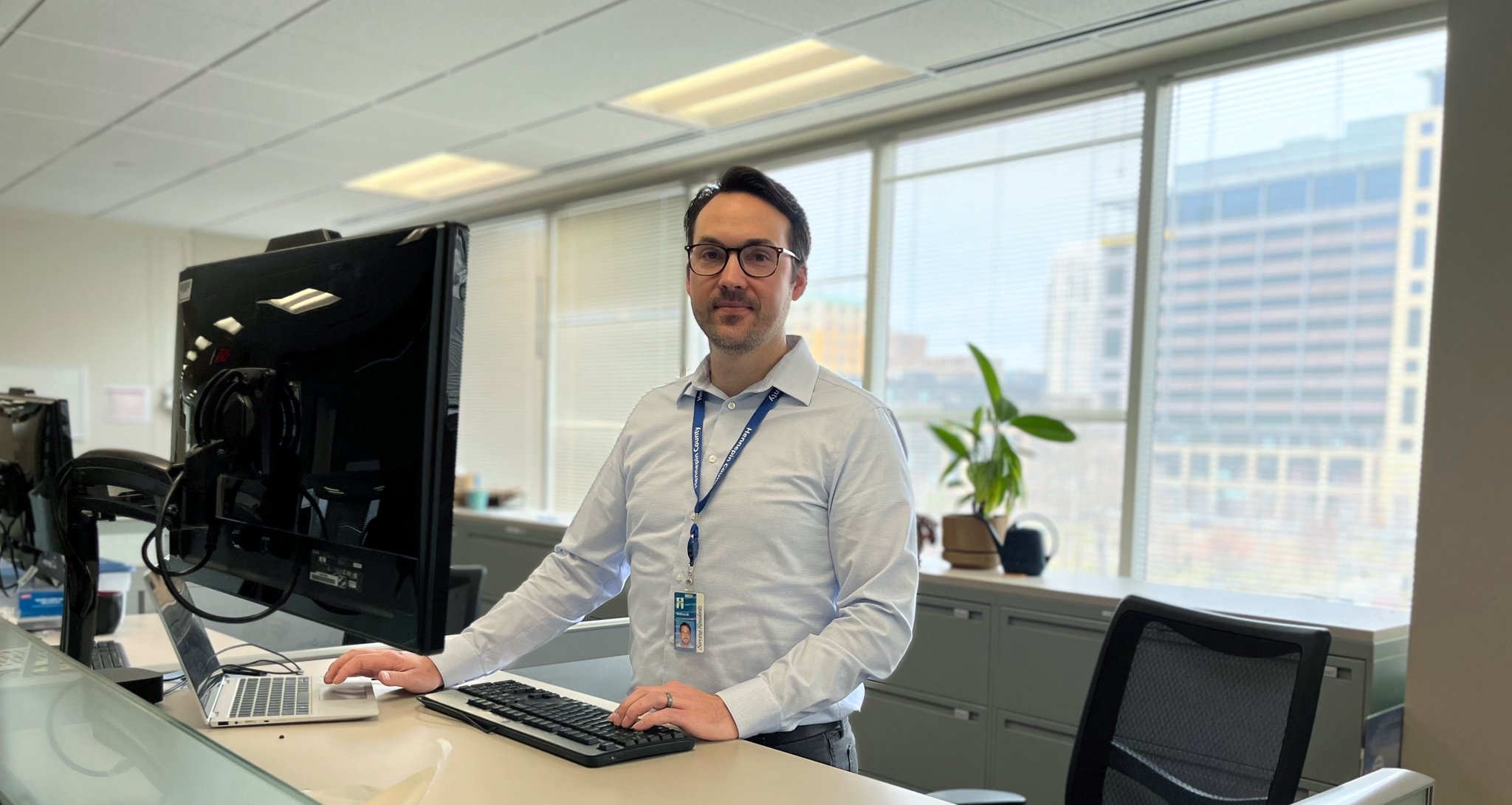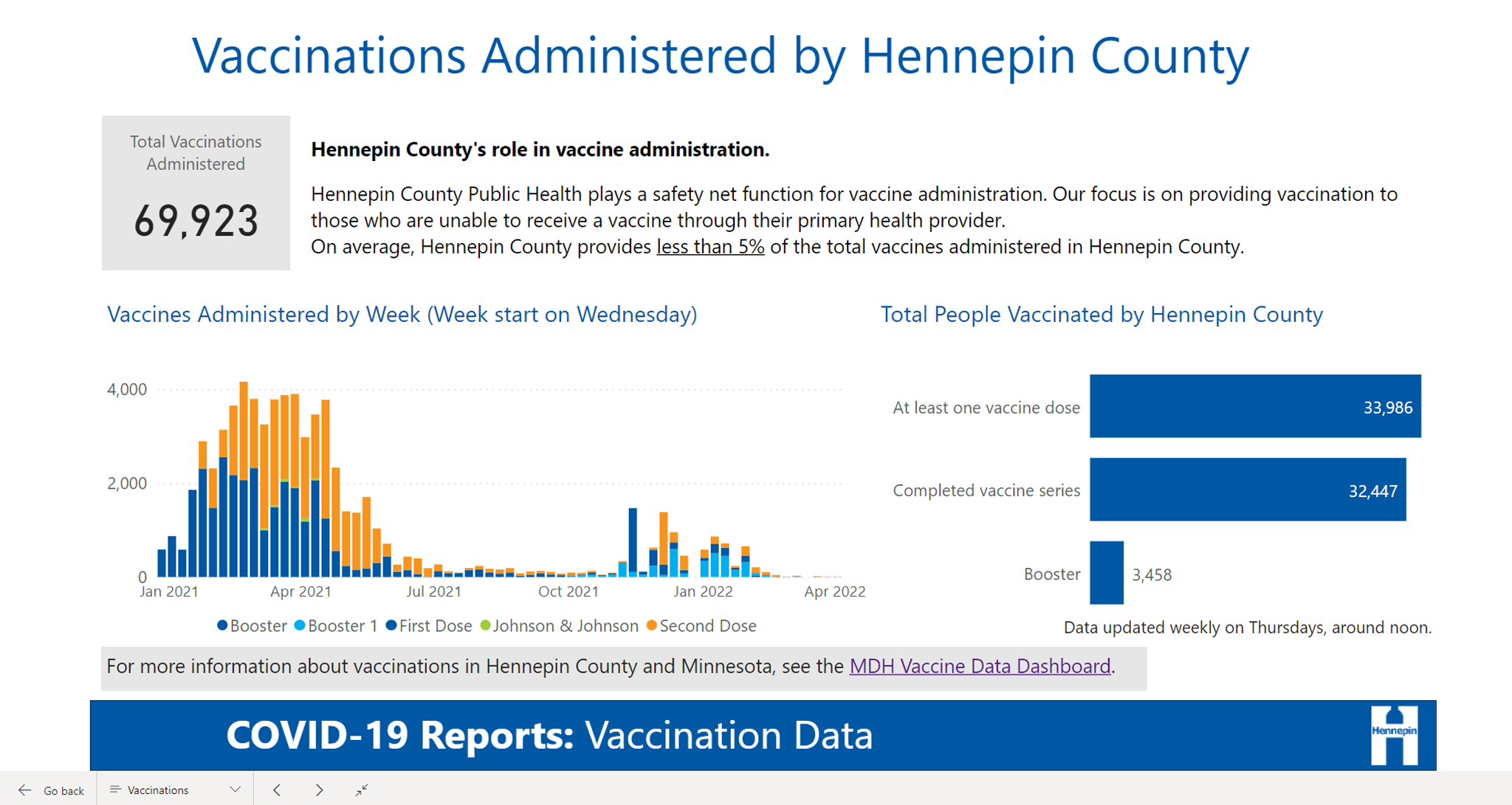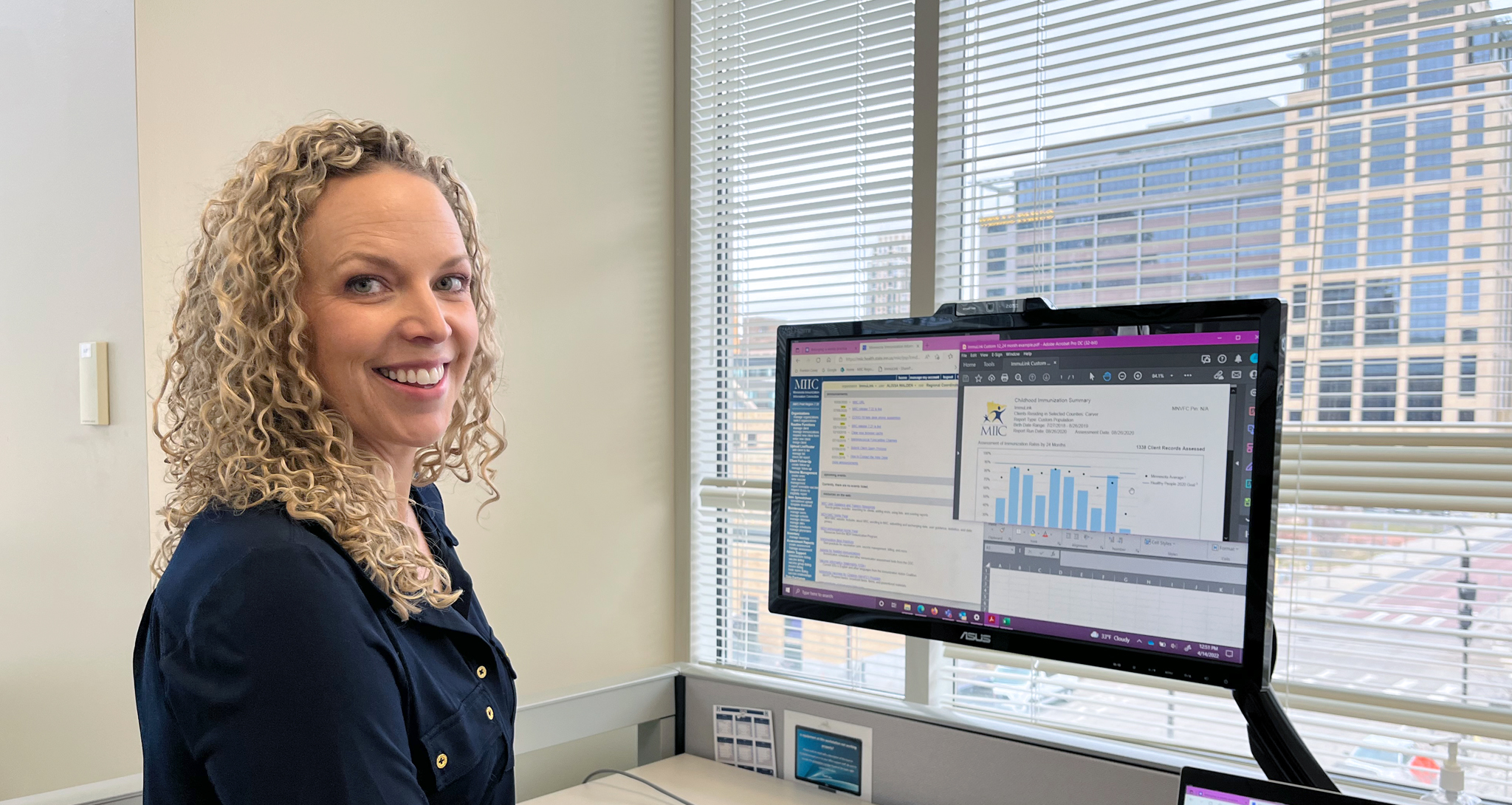

When you think of the public health response to the COVID-19 pandemic, data is probably not the first thing that comes to mind. Yet, data was the backbone of Hennepin County Public Health’s response. As a new disease that everyone was moving quickly to understand, good quality and timely data were of the utmost importance. Decision makers relied on accurate, local data to understand and plan for the ever-changing crisis. Having up-to-date and accessible local data was also essential to maintaining our focus on reducing disparities.
Many staff were involved in the COVID data effort. In this article we’ll share insights from two of our colleagues, Andrew Murray and Alissa Walden.
Because COVID-19 was a new disease that everyone was moving quickly to understand, good quality and timely data were of the utmost importance.
Andrew Murray is an epidemiologist who has worked for Hennepin County for 5 years. Early in the response, he served as an “epi lead” on COVID case investigation and contract tracing (CICT). His role evolved as the response grew in size and complexity. Eventually, Andrew was pulled into data management, a change he welcomed.
“Working with data is one of my big interests,” said Andrew. “My first role was to get up to speed with the framework and to start working with the COVID data team in a transition capacity."
In the earliest days of the pandemic Hennepin County’s Chief Data Officer, Erik Erickson, brought together a small group of data scientists to support the county’s pandemic response efforts. Combining public health science with data science methods, this team implemented many new and powerful data tools. They developed the foundation for data reporting that was used to create many of the COVID-19 data dashboards.
“The data scientists speak a different language,” Andrew said. “This skill set is not something that epi’s typically get training on in school.” There were many new programs that Andrew needed to learn. Still, he enjoyed this new way of working, and looks forward to continuing to master the various programming languages.
Andrew also emphasized the vast amount of daily maintenance required. There are many underlying data sources, as well as constant cleaning and processing of data. “There is a lot of work that needs to be done just to keep things going,” he says. And as our data dashboards and systems got more complex, the “fixes” got more challenging.
Our COVID-19 data improved and evolved over the response. Andrew believes these new tools and practices can help modernize our epidemiology work. “It’s exciting to see the different solutions that are available to us,” he says.
When asked what he will take with him into the next phase of his public health career, Andrew shared how the pandemic helped break down silos among the people and organizations working on data. During the response we worked with many partners and databases, inside and outside of the county, who typically haven’t worked closely together. “The pandemic forced the issue,” Andrew said, “and opened up working relationships.”

Alissa Walden’s role at Hennepin County Public Health is as a regional coordinator of the Minnesota Immunization Information Connection or “MIIC.” MIIC is a confidential registry that stores electronic immunization records and is used statewide.
Keeping track of immunization records is an everyday public health activity, and something Alissa has been doing since 2015. While Andrew and others were tackling macro level issues around analysis and display of data, Alissa and her colleagues in the ImmuLink program were doing the painstaking work of ensuring the quality of individual vaccination records going into those data systems. “We worked to review and clean up lists to ensure MIIC data was the most accurate it could be,” she said.
Alissa explained that throughout the COVID vaccination effort it was very common to find that duplicate profiles had been created for a single person in the MIIC system. Duplicate records have always been an issue in MIIC, but “this work skyrocketed during COVID,” according to Alissa. Records clean up went from a few times a month pre-COVID, to a daily task of as much as 30 hours a month.
One reason was mass vaccination events. These large events were essential in getting as many people vaccinated as quickly as possible, but likely contributed to errors. Some routine processes that would happen in a doctor’s office, like looking up a vaccine record, might not happen at a mass event. A community vaccine event might create a spreadsheet of all the people they vaccinated, and later upload that list into MIIC. If a single demographic detail was recorded differently on the spreadsheet – like a nickname instead of a legal name - MIIC created a new record.
MIIC regularly works with a variety of different organizations, but typically focuses on local public health and primary care clinics. The pandemic prompted more organizations, like schools and employers, to reach out about the vaccination rates of their populations Because vaccination records are protected health information the ImmuLink team had to be very cautious in how this data was aggregated and shared. The result was rewarding. Alissa and the MIIC team felt “needed” and really enjoyed working with these new partners. "It felt refreshing to be a resource for community-based organizations and schools."
Like Andrew, Alissa found the COVID data work to be intense and all encompassing, but also meaningful. “I felt proud to be doing this work,” Alissa said. She explained that it felt personal because her mom is immunocompromised. Making sure that most people in the community were vaccinated against COVID was a tangible way to protect people like her mom.
The experience of the COVID response led Alissa and the team to reach out to other partners within Hennepin County and encourage them to consider expanding the services and tools they offer. “We are looking forward to keeping up these new partnerships,” Alissa says, “We hope to keep the conversation going.”

While the pandemic was extraordinarily difficult, it motivated our department to step up our data activities. With help from experts and other partners, we increased the sophistication and accessibility of our data and reinforced its value in decision making. Our staff broke down barriers to create and strengthen partnerships, leading to better data quality and increased use of health data in the community. Our department will continue to benefit from the lessons learned during the pandemic.
